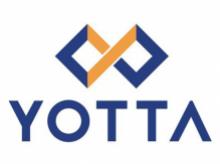The Software as a Service (SaaS) Market 2023: Why You Should Invest In This Market ?
Allied Market Research
published a new report, titled, " The Software
as a Service (SaaS) Market 2023: Why You Should Invest In This
Market ?." The report offers an extensive analysis of key growth
strategies, drivers, opportunities, key segment, Porter’s Five Forces analysis,
and competitive landscape. This study is a helpful source of information for
market players, investors, VPs, stakeholders, and new entrants to gain thorough
understanding of the industry and determine steps to be taken to gain
competitive advantage.
The
global SaaS market size was valued at USD 121.33 billion in 2020, and is
projected to reach USD 702.19 billion by 2030, growing at a CAGR of 18.82% from
2021 to 2030.
The
global SaaS market is primarily being driven by the rise in penetration of
smartphones all across the globe. Additionally, growing use of app-based
services and shift towards business outsourcing in the global economy will
further lead to expansion of the market. Moreover, widespread adoption of public
and hybrid cloud might also push the growth of the market in the forecast
period. On the contrary, high implementation costs associated with SaaS
solutions may create hurdles in the growth of the industry. Nonetheless,
increasing adoption of advanced technologies including AI and ML in various
end-use industries such as healthcare, BFSI, and IT is expected to create
numerous growth opportunities in the growth of the market.
The
SaaS market is segmented on the basis of deployment mode, solution type,
organization size, industry vertical, and region. By deployment mode, it is
segregated into public cloud, hybrid cloud, and private cloud. By solution
type, it is segregated into customer relationship management, enterprise
resource planning (ERP), operation management, human resource management (HRM),
supply chain management, and others. By industry vertical, it is segregated
into BFSI, manufacturing, IT & telecom, retail and e-commerce, energy &
utility, healthcare, media & entertainment, and others. By enterprise size
it is categorized into small to medium enterprise and large-scale enterprise.
Region wise, it is analyzed across North America, Europe, Asia-Pacific, and LAMEA.
Based
on solution type, the customer relationship management (CRM) sub-segment held
the highest market share in 2020, with a market share of one-fourth of the
total revenue. On the other hand, the operation management sub-segment is
expected to have the fastest CAGR of 21.0% during the 2021-2030 period.
Based
on deployment mode, the public cloud sub-segment gathered the highest market
revenue in 2020, with a market share of three-fifths of the total market.
However, the hybrid cloud sub-segment is predicted to have the fastest growth
rate with a CAGR of 20.0% during the analysis timeframe.
By
region, the market across North America held the lion’s share in 2020,
garnering around two-fifths of the global market. The Asia Pacific region, on
the other hand, exhibit the fastest CAGR of 22.0% during the forecast period by
the end of 2030. The other provinces studied in the report include LAMEA and
Europe.
The
key market players analyzed in the global SaaS market include IBM Corporation,
Microsoft, ServiceNow, SAP SE, Google LLC, Cisco Systems, Inc., Adobe Inc.,
Accenture Plc, Oracle Corporation and Salesforce.com, Inc.
Covid-19
Scenario
●
The global COVID-19 pandemic has drastically affected businesses across the
globe. It has affected positively on adoption of SaaS based service, owing to
lockdown imposed by governments of different countries.
●
Post COVID-19 situation, companies are focusing on advanced technology such as
artificial intelligence (AI), machine learning (ML), internet of things (IOT),
cloud computing, and analytics across industries such as BFSI, healthcare, and
IT & telecom to perform contactless operation.
Lastly,
this report provides market intelligence most comprehensively. The report
structure has been kept such that it offers maximum business value. It provides
critical insights into the market dynamics and will enable strategic
decision-making for the existing market players as well as those willing to
enter the market.

































Leave A Comment